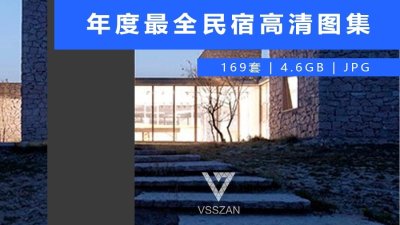Serendipity led architect Vincent Appel and homeowner Kitty Jacobs to each other. While Vincent, founder of the firm Of Possible, was designing a house in Massachusetts, he brought his clients to The Splendid Peasant, Kitty’s home gallery. “After the death of my husband, Martin Jacobs, I shuttered our nationally known, museum-quality American folk art gallery, The Splendid Peasant, sold our modernist house in the Berkshires, and moved to our pied-à-terre on lower Fifth Avenue,” says Kitty.
In addition to the small one-bedroom apartment she already had, Kitty was looking for an additional space in the same historic Beaux Arts building. “The 311-square-foot space was on the market as a ‘package’ with an adjacent two-bedroom unit,” she says. “The owner finally agreed to entertain an offer on the studio alone. Originally, I thought having separate spaces would be awkward, but it’s not true. For me, there is a change of scene, room to spread out, and privacy from overnight guests.”

This painted wooden horse may have originally had rockers.
Deeply involved in the design process, Kitty shared ideas with Vincent, who combined his contemporary aesthetic with the owner’s love for folk art. “What is remarkable about [Kitty] and her late husband, Martin, is that their collection and gallery were a version of the ‘art of living’ ahead of its time—tuned into antique Americana in a way I have rarely seen,” the architect says. “Throughout her life, Kitty had developed an unrivaled sense for craft, materials, texture, color, atmosphere and authenticity. We discovered there are many affinities between folk art and atmospheric interior design.”
Inspired by a studiolo—a 15th-century room dedicated to studying, writing, and contemplating, filled with artifacts such as a cabinet of curiosity—the small space offers calm and protection from the frenetic pace of the city outside, all while capturing the spirit of Kitty’s collection.
“I use the space constantly,” the owner says. “I play the keyboard, work at my computer, read, practice yoga, use it as a photographic studio. From time to time I entertain, and it also acts as a guest room for out-of-town friends.”

The bathroom mirror is an original 1950’s Gio Ponti mirror and the faucets are by Vola.
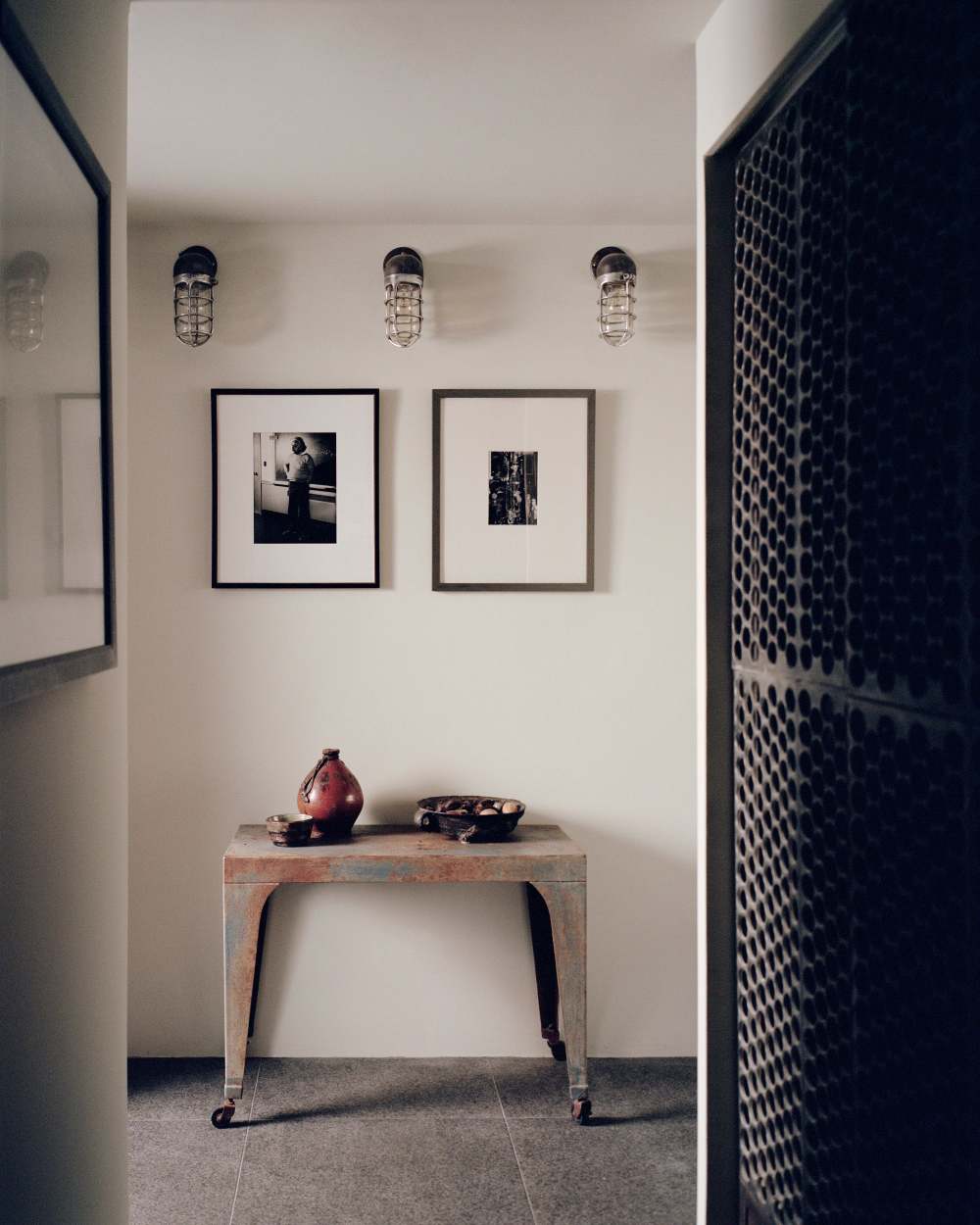
The perforated panels along the wall are antiques that Vincent sourced during years of looking.

While the styling is simple and sparse, the items around are deliberate and meaningful. The coffee table is actually an early cast-iron clock face.
Raw and honest, the materials were chosen by Vincent to be durable and acquire a patina over time. Black granite in different sizes and finishes prevails on the floors, countertops, shower walls, custom dining table, and writing desk. The cabinetry is clad in a matte powder-coated steel on the exterior with blackened oak in the interior. The closet doors, furniture frames, and trim are all raw steel, and the backsplash is a single sheet of low iron-etched glass. The dark palette of blacks, deep grays, and rust tones contrasts with the cool white walls and built-in shelving.
A true labor of love, the small space required time and dedication to either find or custom-design every piece, from the coffee table made from a 19th-century clock face to a mid-19th-century Jewell & Co. prancing horse weathervane, among many other items.
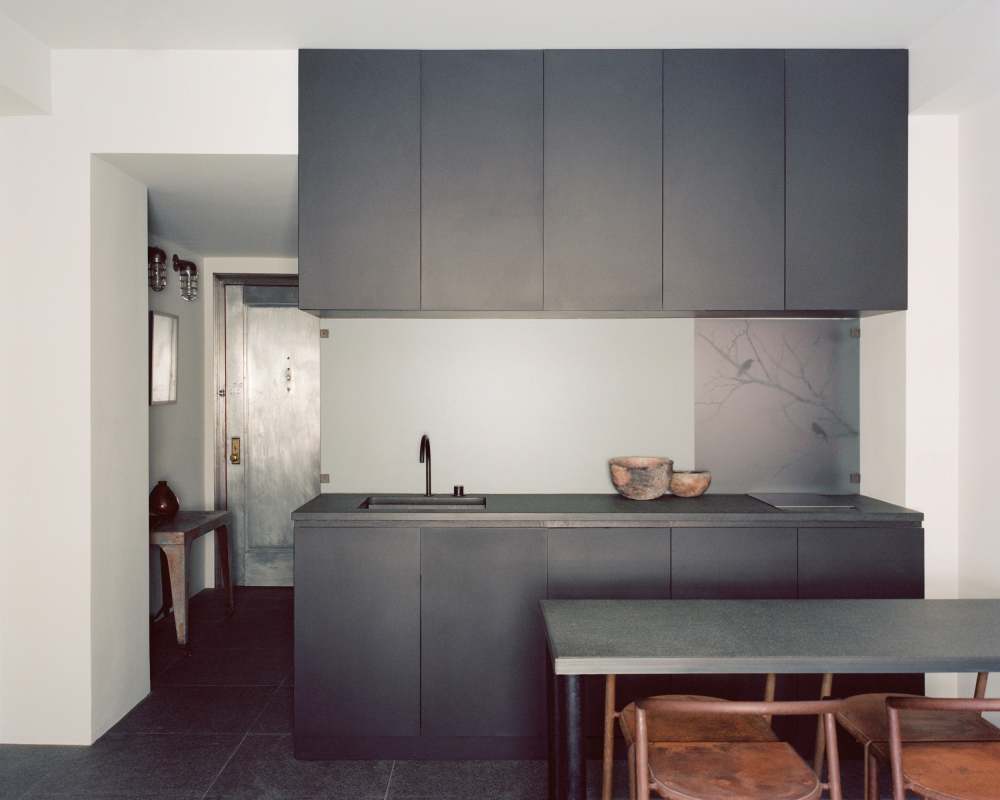
The backsplash is quite an architectural challenge, but essential to the feeling of the space.
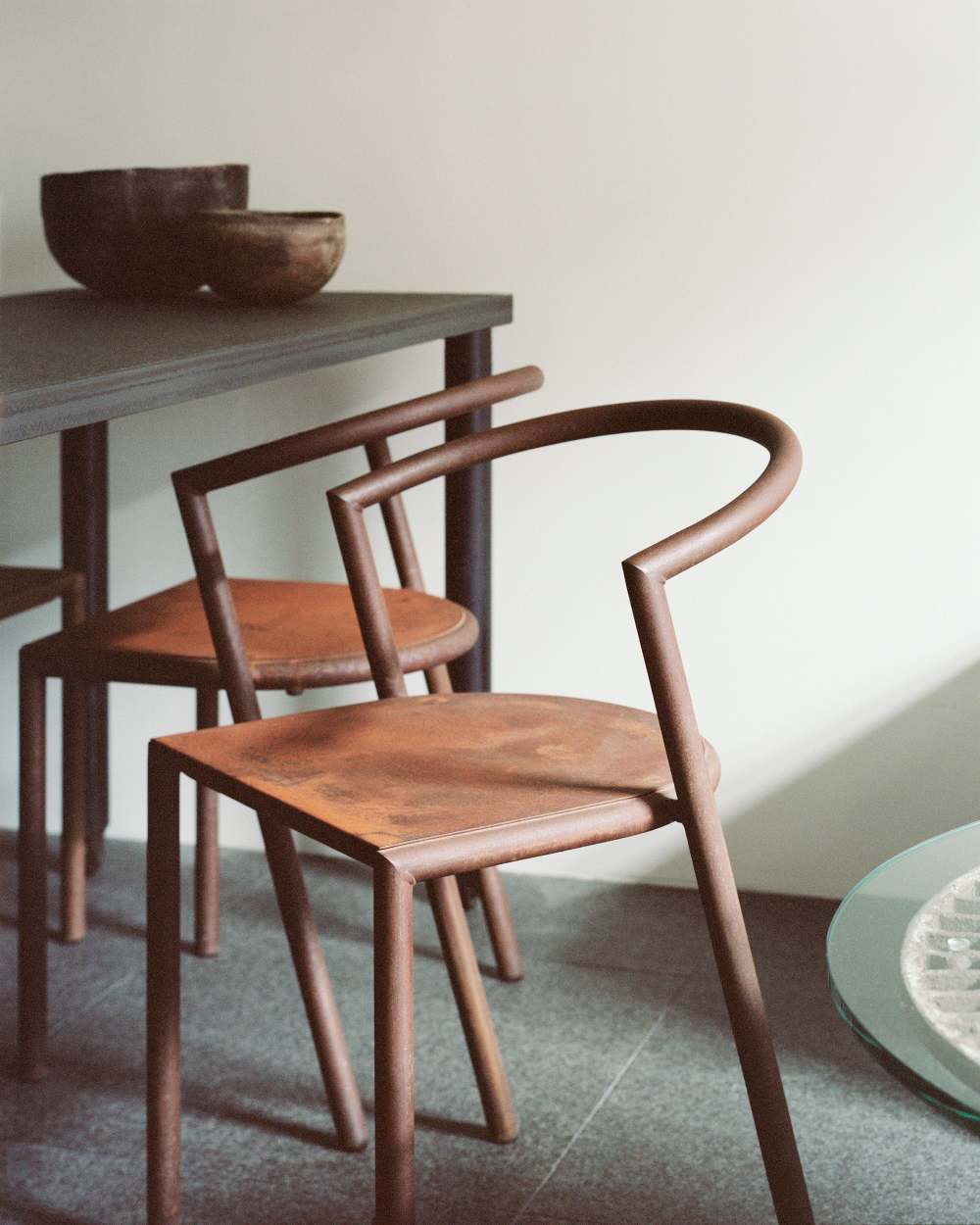
"The chairs were bought in the late 1990s from a salvage shop in Hudson, New York—$150 for the lot," says Vincent. “The specific origin and age are unknown, but the form resembles midcentury Scandinavian seating. When we acquired the chairs they were painted matte black, the undersides covered with chewing gum. We had them sandblasted, rusted, and sealed.”
One of the most exciting parts of this project for both the architect and the owner was incorporating the commissioned sculpture with birds on branches linked by red thread, created by Shana and Robert ParkeHarrison—Kitty’s friends—into the wall between the kitchen and bathroom. “The piece is installed behind the backsplash in a wall cavity designed specifically for the artwork,” Vincent explains. “Both sides of the wall are clad in lightly frosted low-iron glass, and inside the wall we recessed dimmable lights so the sculpture can become more or less visible through the wall. It was a challenge to build ParkeHarrison’s work into the architecture, but at the same time make the architecture an appropriate frame and setting.”
According to Kitty, “The work sets the overall tone for the entire space: peaceful, natural, resonant, and ever-shifting with the light.”
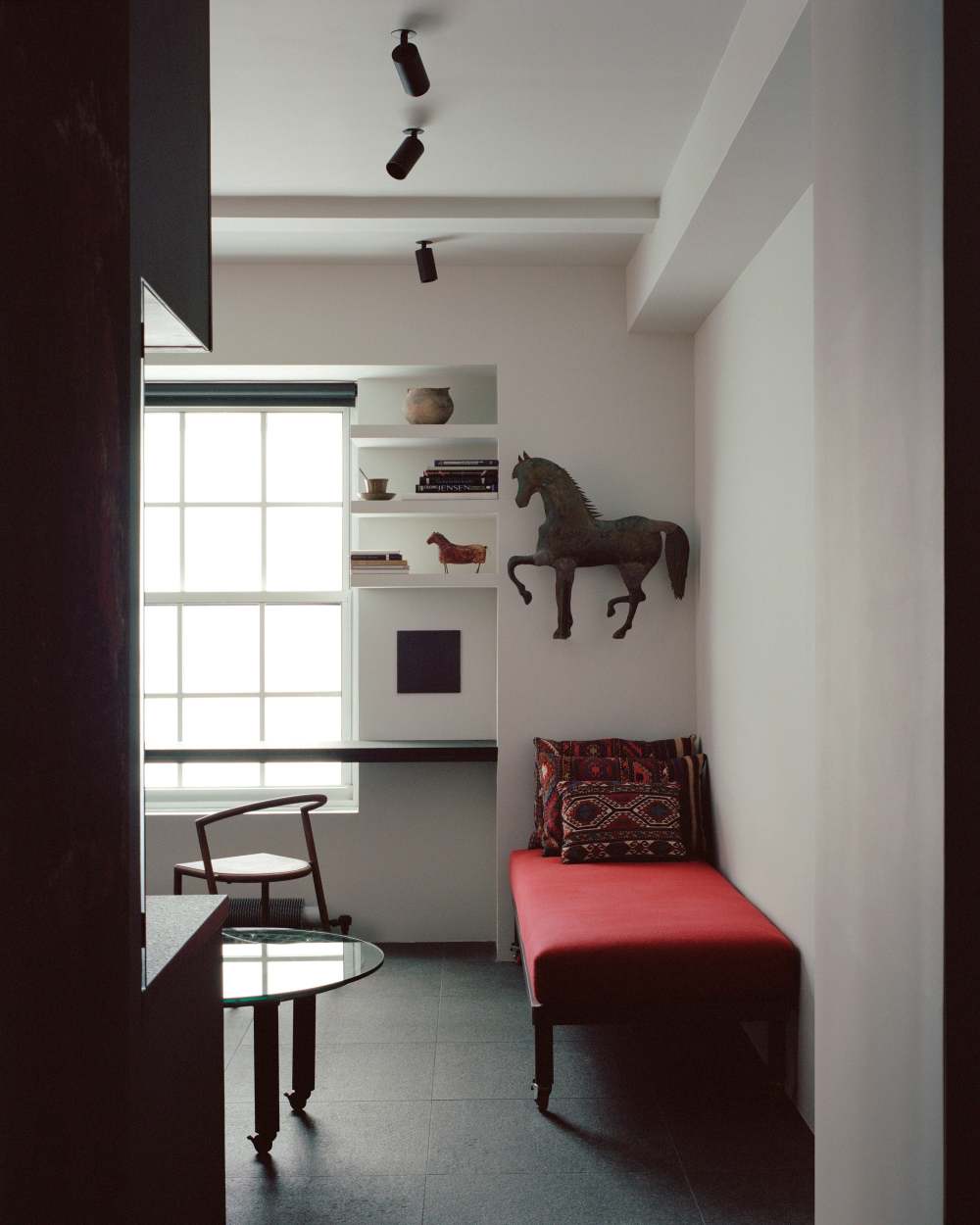
The artifacts around the home are full of stories. Often foundry workers would create personal projects after their shifts. The cup, saucer, and spoon—single piece—are just that. The prancing horse, proudly displayed on the wall, was once a weathervane.
- 转载自:Architectural Digest
- 语言:English
- 阅读原文
|

 发表于 2020-8-3 21:28:00
发表于 2020-8-3 21:28:00










